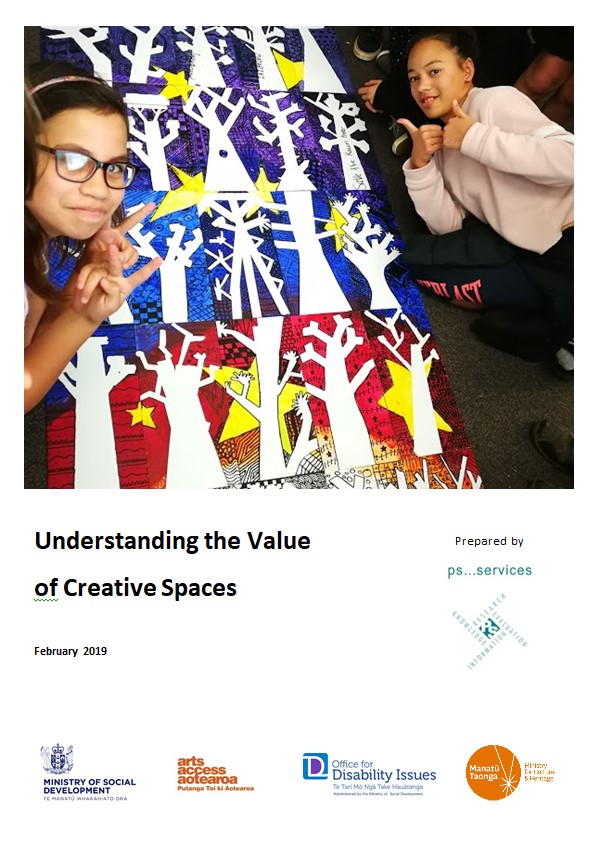Report presents findings about creative spaces
 Arts Access Aotearoa
Arts Access Aotearoa
Category:
Location:
Category:
Location:
A report, Understanding the Value of Creative Spaces, presents key findings from a survey of creative spaces throughout New Zealand, intended to provide key decision-makers and agencies with information about the sector to better understand how the sector operates, the services it provides and to whom.
 Creative spaces are organisations and places where people who experience barriers to participation can create or participate in artforms, including Māori and Pasifika artforms, painting and drawing, crafts, sculpture, photography, theatre, dance, circus, music, film and creative writing.
Creative spaces are organisations and places where people who experience barriers to participation can create or participate in artforms, including Māori and Pasifika artforms, painting and drawing, crafts, sculpture, photography, theatre, dance, circus, music, film and creative writing.
Hon Carmel Sepuloni, Associate Minister for Arts Culture and Heritage, Minister for Social Development and Minister for Disability Issues requested that the Ministry for Culture and Heritage, the Office for Disability Issues and the Ministry of Social Development, with assistance from Arts Access Aotearoa, undertake a study on creative spaces to provide information about the sector.
The Ministry for Culture and Heritage and Arts Access Aotearoa identified 67 different organisations as creative spaces. The survey was distributed to the 67 organisations and responses were received from 42 creative spaces, for a response rate of 63%.
The report includes case studies of four creative spaces: Māpura Studios in Auckland, Artsenta in Dunedin, Te Whare Toi o Ngāruawāhia – Twin Rivers Community Art Centre in Ngāruawāhia and Vincents Art Workshop in Wellington.
All creative spaces (100%) responded that the outcomes for their clients as a result of participating in their creative space are social interaction, increased confidence, improved wellbeing, increased creative expression/skills, increased self-esteem and a sense of belonging. Almost all (95-97%) also indicated that outcomes included communication skills, connection with their local community and self-development.
Most (78%) creative spaces indicated there are services they wanted or needed to deliver in order to achieve their organisation's goals but cannot currently do so. This included delivering more programmes, services or projects to: address unmet needs and demand; extending to other locations or the hours of operation; targeting specific groups within communities; offering specific art or craft forms or skills development; and bringing more consistency in the delivery of programmes.
The key barrier to addressing priority gaps identified by creative spaces was a lack of funding or a funding-related issue. Unsurprisingly, increased funding was identified as the main way creative spaces would be able to address the gaps identified in their services. Increased and/or more secure/stable funding would allow creative spaces to employ more staff, and more-skilled or specialist staff, to develop and run their programmes and connect with communities; increase their capacity and space available; and find more suitable or larger venues for the services and clients groups they wished to deliver to.
The report was prepared by ps ... services.
![]() Understanding the Value of Creative Spaces: a report on survey findings
Understanding the Value of Creative Spaces: a report on survey findings
![]() Understanding the Value of Creative Spaces: a report on survey findings
Understanding the Value of Creative Spaces: a report on survey findings